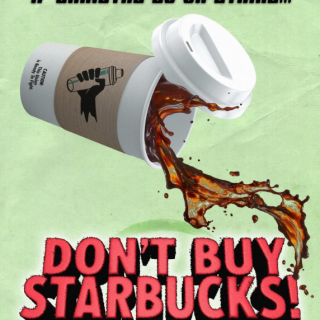You still have time! Until July 22, you can submit your comments – pro or con – to the Drug Enforcement Administration (DEA) concerning the rescheduling of marijuana, moving it from the most restrictive Schedule I to the lesser controlled Schedule III. The background concerning this move by the U.S. Justice Department can be found in the last Mary Jane’s Guide.
- Here’s how YOU can comment: Submit your rescheduling comment to the DEA here: https://www.regulations.gov/commenton/DEA-2024-0059-0001. Comments can also be sent by regular or express mail to DEA Federal Register Representative/DPW, 8701 Morrissette Drive, Springfield, Virginia 22152. Please reference “Docket No. DEA-1362” on all correspondence. Deadline is July 22.
As of this writing, the DEA has received 30,185 comments on this subject. Here’s the very first: “Cannabis was listed as a schedule one out of racism and fear mongering. Keeping it that way should be a crime in its self [sic]. Shame on you all.”; and, the second one: “Title: The Healing Potential of Cannabis: Alleviating Pain, Anxiety, and PTSD” (some comments are rather long); and the fourth: “MD here in IL. My patients almost unanimously use cannabis for pain, and it has no side effects. It's a godsend & should be completely unscheduled.”
Below is Mary Jane’s comment to the DEA, input on July 16, 2024. Here it is on the DEA docket website.
=-=-=-=
Let’s talk cancer. It is a multi-faceted, often deadly disease. The National Cancer Institute defines it as “a disease in which some of the body’s cells grow uncontrollably and spread to other parts of the body.”
Normal human cells grow, multiply, and form new cells as the body needs them. Over time, they can age or become damaged. New cells are then created to take their place. Sometimes this process breaks down, and the damaged cells grow and multiply, forming lumps, aka tumors. Cancerous tumors can spread into nearby tissue or travel to other parts of the body to form new tumors.
There are more than 100 types of cancer, some based on the location in the body, some based on age, and some based on hormones. Among these are also tumors that circumvent programmed cell death (apoptosis), ‘hide’ in the immune system, or fail to eliminate cells with damaged DNA.
For the better part of a century, Americans have been promised a cure. They have searched for it. Lobbied for it. Paid dearly for it. Ran for it. And continue to suffer and die for lack of it. The death rate is staggering. It seems every person has a friend, family member or co-worker who has suffered and died from cancer.
The American Cancer Society reported that 335,000 Americans died from cancer in 1971. By 2023, that annual number doubled to 611,720. In all, over the last 50 years, over 27 million – let that sink in, 27 million – Americans have lost their lives to cancer. That’s 20+ times more than the total deaths (1.1 million) in all of U.S. wars since the founding of this country. If warfare deaths are tragic, then cancer’s staggering death toll has been disastrous.
Why? Why is happening? Why do we tolerate such a monumental disaster? Why is a cure so elusive?
The culprit may have been the product of five events that converged in the early 1970s.
The first event was the Controlled Substances Act of 1970 (CSA). Signed into law by President Richard Nixon, this legislation regulates pharmaceutical and non-pharmaceutical drugs and other substances as “controlled substances” that purportedly pose risk of abuse and addiction. The Act covers the manufacture, importation, possession, use and distribution of narcotics, stimulants, depressants, hallucinogens, anabolic steroids, some chemicals, and cannabis/marijuana. Cannabis found itself relegated to the most restrictive, most tightly controlled Schedule 1.
Secondly, in June 1971, President Richard Nixon declared “War on Drugs” to fight drug abuse, namely marijuana, as “public enemy #1.” The targets: blacks and hippies.
Then, in 1973, wanting a singular agency to enforce the drug war, Nixon established the Drug Enforcement Administration (DEA), which oversees the CSA. Over the last 50 years, the agency has rejected marijuana rescheduling five different times, even overruling its own administrative law judge. (see below) It has employed other stumbling blocks like being the sole source of “research grade” marijuana (more like hemp), or mandating special research protocols.
And then there’s cancer. In 1975, researchers at the National Cancer Institute published “Antineoplastic activity of cannabinoids,” [components of the cannabis plant] which found that “Lewis lung adenocarcinoma growth was retarded by the oral administration of delta9-tetrahydrocannabinol (delta9-THC), delta8-tetrahydrocannabinol (delta8-THC), and cannabinol (CBN).” In other words, cannabis could cure cancer.
Here is another twist and a monumental new event. Rescheduling a drug under the Controlled Substances Act requires technical reviews by the governmental agencies, Health and Human Services (HHS) and the DEA. After HHS completed its 2023 review as originally prescribed by law, the Attorney General signed and forwarded it to the DEA. However, the U.S. Supreme Court in June 2024 overturned a 1984 ruling called the “Chevron deference” in which judges deferred to federal agencies – like the DEA – for legal interpretations. Now, many in the cannabis industry are wondering about the implications. Will this landmark decision negate rescheduling, or will the process proceed regardless? Legal opinions vary.
One historic pivot point harkens back to 1988 when, in response to a 1972 rescheduling petition (16 years later and after hearing testimony, Chief Administrative Law Judge Francis Young determined, “Marijuana, in its natural form, is one of the safest therapeutically active substances known to man … It would be unreasonable, arbitrary, and capricious for DEA to continue to stand between those sufferers and the benefits of this substance in light of the evidence in this record.” He goes on to list the adverse effects of five cancer chemotherapy drugs. Regardless, in 1994 (22 years later and after an appeal), DEA Administrator John Lawn made the unreasonable, arbitrary, and capricious decision to reject Judge Young’s determination. One wonders how many patients would suffer needlessly from a bureaucratic decision vs. one decided in a fact-based court of law.
Sadly, for the next thirty years, cannabis remained Schedule 1. Under the auspices of the CSA and the DEA, marijuana research shriveled and died. Government agencies decided that pursuing, arresting, bankrupting, intimidating, and incarcerating growers and users were more important than rescheduling the plant and following the research. The price for this unreasonable, arbitrary, capricious, and even evil decision has been 27 million lives lost. Sure … but let’s say cannabis may be curative for only half of them. That’s still 14 million people! Your son. Your daughter. Your mother. Your father. Your husband. Your wife. Your boss. Your friend. Your lover. Your dog. How many deaths will it take to we know that too many people have died?
It’s time to take the handcuffs off cannabis and cannabis research, and the best way to do that is to move marijuana to Schedule III. Eliminate the control of the DEA bureaucrats and turn unimpeded research over to the scientists. Then, we may be able to fully and finally find that elusive cure for cancer. If cannabis cured cancer, would you run for it?
A formatted version of this comment can be viewed here.
---------------------------------------------
Mary Jane Borden is a best-selling author, skilled graphic artist, insightful analyst, and award-winning cannabis activist from Westerville, Ohio. During her 40-year career in drug policy, she co-founded seven cannabis-oriented groups, co-authored four proposed constitutional amendments, lobbied for six medical marijuana bills, penned over 100 Columbus Free Press articles, and has given hundreds of media interviews. She is one of the Courage in Cannabis authors, with articles in both editions. Her artwork can be viewed at CannabinArt.com and she can be reached at maryjaneborden@ gmail.com.



